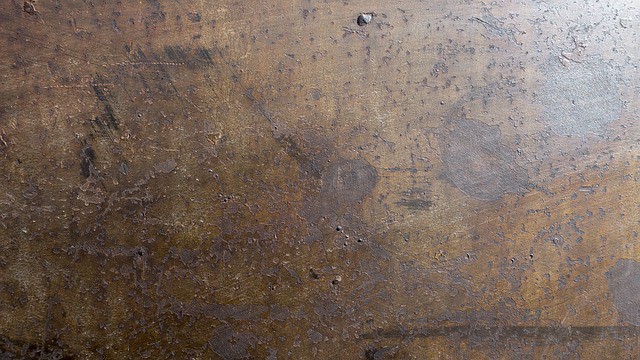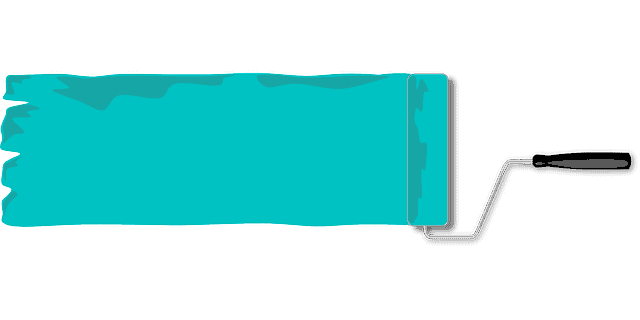How to Keep Spray Paint from Chipping off Metal
Keeping spray paint from chipping off may be cumbersome, especially if you fail to adhere to the application procedure given by the manufacturer or a professional painter.
Whether metallic or wooden structure, chipping action affects the outlook impression and primary surface material if not attended.

On how to keep spray paint from chipping off the metal – you select tools and materials required, inspect the suspect the painted surface, and clean the metal surface before sanding and polishing to attain a smooth finish.
Further, you will select, prepare, and apply the primer as a way of boosting base coat stickiness action and reducing subsequent chipping occurrences. Select, prepare, and apply the finish paint before sealing the final paint layer as a way of blocking the chipping agents from direct action.
Details: How to Keep Spray Paint from Chipping off Metal
When it comes to safety, wear protective gear and adhere to precautions given in this article during actual preparation. Here are the material and tools required:
- Sandpaper and primer
- Polishing machine and Finish paint
- Overall and safety goggles
- Waterpoint and A paintbrush
- Baking soda or Vinegar
- Paint sealer and Paint scraper
- Boots and Respirator
- Mop or piece of cloth
- Power source and Paint thinner
Step 1: Inspect the Surface
- Wear appropriate protective gear (Respirator, boots, overalls, gloves, and safety goggles) for your personal safety
- Inspect the surface area suspected to undergo paint chipping. Check on signs such as paint coat lifting, chalky appearance, or paint layer dislodging.
- Using a putty knife, test the chipping action on the metal surface (scrub) to ascertain if the paint layer is loose or chip
You can opt to use a lens (hand lens) to identify intricate sections, which may not be visible with naked eyes. Upon approval, you can proceed to the next step.
Step 2: Clean the Surface
- Soak a piece of cloth in water, vinegar, or baking soda solution
- Mop the chipping surface gently to remove surface debris and dust particles
- Stain the area with a paint stripper and leave the surface to quench for a duration provided by the manufacturer
- Using a paint scraper, scrub the surface gently to remove old chipping paint.
- Repeat the previous step until the entire paint is removed.
https://www.youtube.com/watch?v=BTgbVwfigeU
Step 3: Sand and Polish the Area
- Connect the sander to the power supply and press the power button on
- Gently, run the Sander over the metal surface to remove the paint remains. Be careful not to damage the primary surface material
- Alternatively, use medium-grit sandpaper to polish the surface
- Then, connect the polishing machine to the power supply.
- Polish the sanded surface gently to attain a smooth finish
- Using a blower, blow off the dust and surface debris
- Mop the surface with clean water and leave it to dry to touch
Step 4: Select, Prepare and Apply Primer
Primer selection
Select the primer that works best for metal application. Usually, the primer of your choice should be waterproof, dirt-resistant, fast-drying, and more comfortable to thin.
Moreover, consider primer that matches the prevailing climatic condition and ones that integrate high stickiness level.
Primer Preparation
- Pour primer into an empty bucket gently
- Add thinner and stir thoroughly as per the manufacturer’s instructions
- Test the primer on the metal surface to ascertain the contact stickiness
Primer Coating
- Load a paintbrush with primer sufficiently
- Apply the primer back and forth on the polished surface
- Repeat the previous steps until the surface is entirely primed
- Leave the primed layer to dry – as prescribed by the manufacturer
Step 5: Select, Prepare and Apply Finish Paint
Finish Paint Selection
When selecting the finish paint, you must match the solvent with the primer choice used previously (water-based primer should be painted with a water-based finish coat and vice versa).
Besides, you need to choose finish paint, which is fast drying, easier to thin, forms strong adhesive bond, mold and mildew resistance (for the wet area), and integrates UV-ray blockers if used in a sunny environment.
Finish Paint Preparation
- Pour finish paint into an empty bucket
- Thin appropriately as per the manufacturer’s guidelines
- Stir thoroughly to attain uniform solvent
- Test the paint quality over the metal surface – drop test experiment
NB: Well-thinned paint should load a paintbrush without much drain.
Finish Paint Application
- Dip a roller or a paintbrush into the finished paint and load appropriately
- Cut off excess paint to prevents surface drips or drains
- Apply back and forth of the primed metal surface
- Repeat the steps above until the whole surface is painted
- Leave the first coat to dry – 2hrs or otherwise advised by the manufacturer
- Apply the second finish coat and leave it to dry naturally – the second coat is necessary to improve outlook impression and prevent chipping and peeling action.
Step 6: Seal the Finish Coat
It’s necessary to seal the finish paint layer with vinyl or epoxy paint film to improve the abrasion resistance.
The paint seal also keeps off moisture from the surface, thus preventing the paint layer from chipping agents.
By undertaking the paint sealing process, the undercoat layer attains extra surface life and maintains its original color for a longer time without defacing.
Remember, most paint sealants are waterproof; therefore, you will easily mop the painted surface without experiencing chipping or peeling problems.
See Also: Deck Sealer for Pressure Treated Wood
Why Do Sprayed Paint May Chip Off Metal?
Sprayed paint may chip off metal due to some of the following reasons:
1. Wrong paint selection
When coating metal surface, finish paint should be matched with the right metal you intend to paint (as indicated by the manufacturer) in order to eliminated chipping cases.
Otherwise, the stickiness level is compromised during the application process and thus the paint begins to chip with time.
Usually, the paint compatibility with the primary metal surface is weak and tends to lose adhesive contact at a different point in time.
You can boost the stickiness level of finish paint by priming the metal surface before applying the finish coat layer.
Carry out paint compatibility text over the metal surface before the actual application is done if you are not sure of the exact metal use.
2. Insufficient Surface Preparation
Improper metal surface preparations leave behind dust particles and surface debris that impends the paint stickiness level, and hence leads to chipping action with time.
Further, oil and grease left on the surface during preparation weaken the paint adhesive ability upon application and initiates chipping eventually.
During surface preparation, it’s advisable to blow off dust and surface debris and mop the metal surface to dryness in order to attain strong paint contact upon application.
Avoid painting wet metal surfaces as this initiates chipping and peeling action in long run.
Importantly, consider using waterproof finish paint when painting metal surfaces that are located in humid or wet environments.
See Also: Airless Paint Sprayer Under 500
Which Other Problems Affects Spray Painted Metal?
Apart from chipping, sprayed metal can be affected by other problems as highlighted below:
i. Peeling and Flaking
Peeling is a condition that occurs when finish paint loses contact with the primary metal surface. Normally, the paint layer detaches from the surface as a section or large sheet of the paint coat.
Peeling or flaking is mainly caused by poor surface preparation, wrong paint selection/preparation, and wrong application procedure.
Further, the wet metal surface plays a great role when it comes to initiating peeling action on the metal surface.
Also, the paint finish will peel if too many paint layers are piled together over old paint during reinforcement.
Before the painting is carried out, thorough paint preparation should be done and surface debris/dust particles eliminated.
Further, match the finish paint with the right metal surface – be keen to read the manufacturer’s instructions.
You should also prime the metal surface before applying the finish coat to boots’ paint stickiness.
ii. Fading and Aging
Fading occurs when the original finish coat color tends to lose its impressiveness or attractiveness due to the loss of color pigments.
The paint layer tends to fade when exposed to external factors such as UV-rays, which break and disintegrate paint color pigments, thus leading to fading.
On the other hand, aging results from the weakening of the paint chemical structure that leads to the breakdown of molecular bonds within the paint layer.
Then, aged paint chips, scuff, peel, and even flake with time if not attend.
To curb fading problems, you should select finish paint that contains UV-ray blockers and resistant to fading agents such as molds and mildew.
More so, seal your painted metal to boost the aging period and block fading agents from direct contact.
See Also: Paint Roller for Popcorn Ceiling
Conclusion
On how to keep spray paint from chipping off metal, you begin by selecting tools and materials required, inspect the suspect the painted surface, and clean the metal surface before sanding and polishing to attain a smooth finish.
Besides, you will select, prepare, and apply the primer as a way of boosting base coat stickiness action and reducing subsequent chipping occurrences.
Finally, select, prepare and apply the paint finish before sealing the final paint layer as a way of blocking the chipping agents from direct action.





